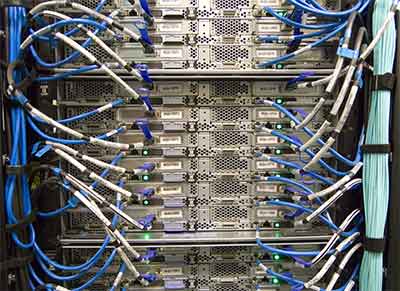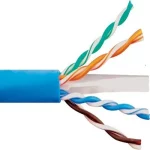Bare metal switches are gaining traction as a flexible, cost-effective alternative to traditional network switches, especially in enterprise and data center environments. If you’re considering whether to adopt this technology for your network, here’s a comprehensive breakdown of what you need to know—covering the essentials, benefits, challenges, and how bare metal switches fit into modern networking trends.
What Is a Bare Metal Switch?
A bare metal switch is a network switch that comes without a pre-installed operating system (OS). Unlike traditional switches, which are sold with proprietary software bundled in, bare metal switches give you the freedom to install your choice of network operating system (NOS). This separation of hardware and software is similar to bare metal servers, where you get raw hardware and install your preferred OS and applications.
These switches are typically built using standardized, off-the-shelf components, such as high-performance switching chips from vendors like Broadcom or Intel. This design makes them highly customizable and often more affordable than proprietary alternatives.
Why Are Bare Metal Switches Becoming Popular?
The rise of bare metal switches is closely tied to the growing adoption of open networking. Open networking emphasizes the decoupling of hardware and software, fostering flexibility, interoperability, and innovation. Here’s why they’re catching on:
- Cost Savings: Without the added cost of pre-installed software, bare metal switches are often cheaper than traditional switches, making them attractive for budget-conscious organizations.
- Flexibility and Customization: You can select an NOS that fits your specific needs, such as commercial options like Cumulus Linux or open-source solutions like Open Network Linux (ONL).
- Avoiding Vendor Lock-In: Traditional switches tie you to a single vendor’s ecosystem, whereas bare metal switches let you mix and match hardware and software from different providers.
Key Benefits of Bare Metal Switches
Here are the primary advantages that make bare metal switches appealing:
- Lower Costs
By eliminating bundled software, bare metal switches reduce upfront capital expenditures. You pay only for the hardware and the NOS you choose, which can lead to significant savings. - Scalability
Bare metal switches support modern network architectures like leaf-spine, which are ideal for handling large-scale traffic as your network grows. - Interoperability
Built with standardized components, these switches integrate well with a variety of software and hardware, simplifying adoption into existing infrastructures. - Future-Proofing
You can update the NOS independently of the hardware, keeping your network software current without needing to replace the switch.
Challenges and Considerations
While bare metal switches offer compelling benefits, they come with some trade-offs:
- Technical Expertise Required
Since they arrive without an OS, you’ll need to install and configure the NOS yourself. This demands a level of IT expertise that might be a barrier for smaller organizations or those without dedicated network engineers. - Support and Maintenance
Unlike traditional switches with comprehensive vendor support, bare metal switches may require more hands-on management for troubleshooting and updates, potentially increasing operational overhead. - Limited Warranties
Bare metal switches typically come with hardware-only warranties, which are narrower in scope than the support packages offered by traditional vendors.
How Do Bare Metal Switches Compare to Other Options?
You might hear terms like “white-box” or “brite-box” switches in similar contexts. Here’s how they differ:
- Bare Metal Switch: Hardware-only, no pre-installed OS. You install the NOS of your choice.
- White-Box Switch: Often synonymous with bare metal, but sometimes includes an open-source NOS pre-installed.
- Brite-Box Switch: A white-box switch rebranded by a known vendor, offering some cost benefits with added support and software.
For maximum flexibility, bare metal switches are the go-to, while white-box and brite-box options provide a middle ground with some pre-configuration.
Is a Bare Metal Switch Right for Your Network?
Whether a bare metal switch is a good fit depends on your needs:
- You Need Flexibility and Control: Ideal for organizations wanting to customize their network stack and avoid vendor lock-in.
- You’re Cost-Conscious: Lower upfront costs and affordable NOS options can save money.
- You Have the Expertise: You’ll need a team capable of handling installation, configuration, and maintenance.
If you prefer a plug-and-play solution with minimal setup, a traditional switch might be better suited.
The Future of Networking: Open and Programmable
Bare metal switches are part of a broader shift toward open, programmable networks. As software-defined networking (SDN) gains momentum and organizations seek greater control over their infrastructure, demand for bare metal switches is likely to grow. This trend is already evident in large-scale data centers and enterprises prioritizing agility and cost-efficiency.
In summary, bare metal switches offer a powerful way to build a network that’s tailored to your needs, scalable, and budget-friendly. They provide the freedom to choose your NOS and customize your infrastructure, but they require technical know-how and hands-on management. As open networking continues to shape the future, bare metal switches are poised to play a key role in modern network architectures. If you’re ready to invest the effort, the rewards can be well worth it.





